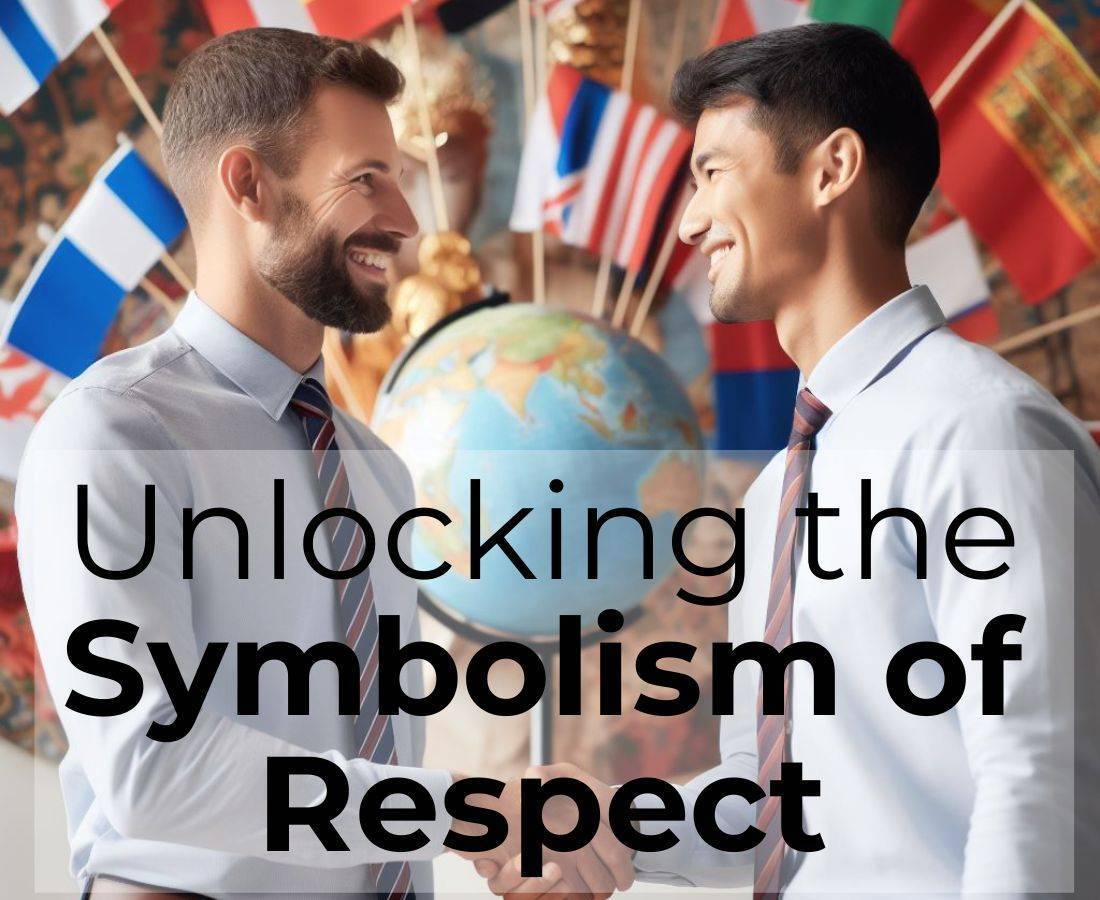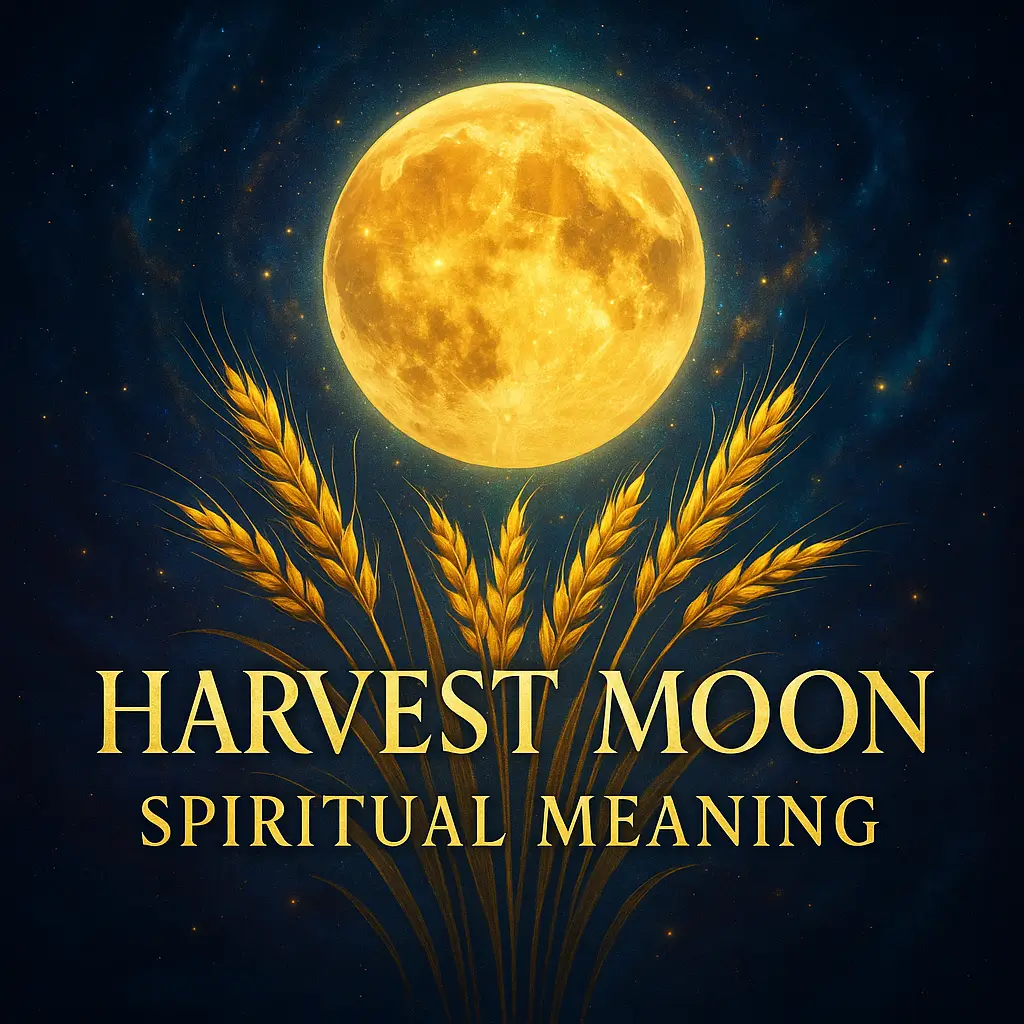Respect is a universal concept that holds deep symbolic meaning across cultures and societies. It encompasses accepting and appreciating oneself and others without judgment, creating harmony and allowing individuals to live in peace. It extends beyond human interactions to encompass everything in nature—animals, the environment, and the creations of others. Lack of respect leads to conflict and wars, as we impose our beliefs on others instead of respecting their way of life.
In different cultures and religions, symbols play a powerful role in expressing respect. From gestures and non-verbal actions to cultural symbols and religious practices, these symbols foster understanding and promote inclusivity. They transcend language barriers, conveying complex ideas and emotions. By understanding the hidden meanings of symbols, we can create compelling visual narratives and leave a lasting impression in branding and marketing. Symbols are also extensively used in design to enhance usability and convey information efficiently.
Table of Contents
- 1 Key Takeaways
- 2 Understanding the Meaning and Importance of Respect
- 3 Cultural Symbols of Respect
- 4 The Role of Respect in Society and Religion
- 5 Symbols of Respect in Nature and Society
- 6 Harnessing the Power of Symbols for Communication and Design
- 7 Exploring Universal and Cultural Symbols of Respect
- 8 Conclusion
- 9 Source Links
- 10 FAQ
- 10.1 What are some universal symbols of respect across different cultures?
- 10.2 How do symbols of respect differ between Eastern and Western cultures?
- 10.3 What are some popular respectful symbol tattoos and their meanings?
- 10.4 How are respectful symbols used in digital communication?
- 10.5 What role do animals play as symbols of respect in different cultures?
- 10.6 How can businesses incorporate symbols of respect into their branding?
- 10.7 What are some everyday gestures that serve as symbols of respect worldwide?
Key Takeaways
- Universal concept of respect holds deep symbolic meaning across cultures and serves as the foundation for societal harmony.
- Symbols of respect like the Mountain Lion and Buffalo in Native American culture represent leadership, courage, and harmony with nature.
- Lack of respect often leads to conflict and misunderstanding when we impose our beliefs on others instead of honoring differences.
- Cultural symbols of respect transcend language barriers and foster inclusivity by conveying complex ideas across diverse communities.
- Understanding and using respectful symbols appropriately creates compelling brand narratives and enhances communication in design and marketing.
Understanding the Meaning and Importance of Respect
Respect goes beyond mere politeness; it is the acknowledgment and appreciation of others, expressed through both verbal and non-verbal actions. It is a fundamental aspect of human interaction that forms the foundation of healthy relationships and societal harmony. By recognizing the inherent worth and dignity of every individual, respect fosters empathy, understanding, and cooperation.
Expressions of respect can take various forms, both in words and actions. Verbal gestures such as using kind and considerate language, actively listening to others, and giving compliments are common ways of showing respect. Non-verbal symbols of respect, on the other hand, encompass a wide range of actions and behaviors. These can include making eye contact, offering a firm handshake, bowing or nodding, and using appropriate body language.
Symbolic actions of respect hold immense significance in different cultural contexts. For example, in some cultures, removing one’s shoes before entering a home or place of worship is considered a symbol of respect and humility. In other cultures, offering a respectful greeting, such as a bow or a namaste, is customary when meeting someone. These symbols not only convey respect but also demonstrate an understanding and acceptance of cultural norms and values.
| Verbal Symbols | Non-Verbal Symbols |
|---|---|
| Kind and considerate language | Eye contact |
| Active listening | Firm handshake |
| Giving compliments | Bowing or nodding |
Understanding and embodying the meaning of respect is essential for fostering positive relationships and creating inclusive environments. It allows individuals to transcend cultural and social differences, promoting empathy and harmony. By embracing respect as a core value, we can contribute to a more compassionate and understanding society where everyone feels valued and heard.
Cultural Symbols of Respect
Symbolism of respect varies across cultures, with each culture expressing their reverence through unique symbols and gestures. These symbols hold deep meaning and significance, representing the values and traditions of a particular society. Let’s delve into some of the cultural symbols of respect from around the world:
Native American Symbols
| Symbol | Meaning |
|---|---|
| Mountain Lion | Symbolizes leadership, strength, and courage. It represents respect for the natural world and connection to ancestral spirits. |
| Buffalo | Considered a sacred animal, the buffalo represents abundance, gratitude, and respect for the harmony of nature. |

Chinese Symbols
| Symbol | Meaning |
|---|---|
| Tiger | The tiger symbolizes respect, power, and bravery in Chinese culture. It exemplifies the qualities one should possess to gain respect. |
| Elephant | The elephant holds great significance in Chinese culture, representing wisdom, strength, and environmental preservation. It symbolizes the respect for nature and harmony with the earth. |
Ancient Greek Symbol
| Symbol | Meaning |
|---|---|
| Iris | In Ancient Greek mythology, the iris flower was associated with the goddess Iris, who served as a messenger of the gods. It symbolizes respect, trust, and communication. |
These are just a few examples of the diverse cultural symbols of respect that exist worldwide. As we navigate the intricacies of cultural diversity, it is crucial to understand and appreciate the symbolism behind these gestures and symbols. By doing so, we can foster inclusivity, promote cross-cultural understanding, and cultivate respect in our interactions with people from different backgrounds.
The Role of Respect in Society and Religion
Respect plays a vital role in both religion and society, with symbols serving as powerful tools to convey reverence and promote unity. In religious practices, symbols of respect are often used to honor deities, express devotion, and create a sacred atmosphere. These symbols can range from statues and sacred objects to specific gestures and rituals. For example, in Christianity, the cross is a symbol of respect, representing the sacrifice of Jesus Christ. In Hinduism, the lotus flower is a symbol of reverence, symbolizing purity and enlightenment.
Similarly, in society, symbols of respect are used to uphold social norms, maintain order, and foster mutual understanding. These symbols can take various forms, such as flags, emblems, and gestures. For instance, the national flag is a symbol of respect for one’s country, representing patriotism and unity. Handshakes, bows, and other respectful gestures are also widely recognized symbols of respect in many societies.
“Respect for ourselves guides our morals, respect for others guides our manners.” – Laurence Sterne
To ensure that symbols of respect are used appropriately and respectfully, it is crucial to consider cultural contexts and sensitivities. Symbols hold deep meaning within specific cultures and should be approached with reverence and understanding. Misusing or misinterpreting these symbols can lead to misunderstandings and conflicts. Therefore, it is important to educate ourselves about different cultural symbols of respect and use them in a way that promotes inclusivity and cross-cultural understanding.
| Religion | Symbols of Respect |
|---|---|
| Christianity | Cross |
| Hinduism | Lotus flower |
| Buddhism | Wheel of Dharma |
In conclusion, respect is a fundamental value that plays a crucial role in both religion and society. Symbols of respect serve as powerful tools to convey reverence and promote unity. By understanding and using these symbols in an appropriate and respectful manner, we can foster inclusivity, harmony, and cross-cultural understanding in our communities, contributing to a more peaceful and respectful world.
Symbols of Respect in Nature and Society
Daffodil (Universal)
The Daffodil, a bright and cheerful flower, universally symbolizes rebirth and new beginnings. In many cultures, it’s seen as a sign of respect towards nature’s cycle and the rejuvenation of life. Gifting daffodils is often considered a gesture of deep admiration and respect.
Red (Universal)
Red, a color that evokes strong emotions, is universally recognized as a symbol of passion, love, and respect. In many ceremonies and traditions, red is used to convey deep admiration, honor, and reverence.
Mountain Lion (Native American)
In Native American culture, the Mountain Lion stands as a symbol of leadership, strength, and courage. It embodies the spirit of respect for the natural world and the connection to ancestral spirits, teaching us the importance of balance and harmony.
Buffalo (Native American)
The Buffalo is revered in Native American traditions. Considered a sacred animal, it represents abundance, gratitude, and deep respect for the harmony of nature. Its presence reminds us of the interconnectedness of life and the importance of gratitude.
Hand + Heart (Universal)
The universal symbol of a Hand reaching out to a Heart signifies compassion, kindness, and genuine respect. It’s a powerful representation of human connection, empathy, and the pure intention of helping and understanding others.
Thyme (Ancient Rome)
In Ancient Rome, Thyme was more than just a herb. It symbolized courage and bravery. Gifting thyme was a gesture of utmost respect, signifying the giver’s belief in the recipient’s strength and valor.
Tiger (China)
In Chinese culture, the Tiger is not just a majestic creature but a symbol of respect, power, and bravery. It exemplifies the qualities one should possess to gain respect and is often associated with guardianship and protection.
Iris (Ancient Greece)
The Iris flower, associated with the goddess Iris in Ancient Greek mythology, symbolizes respect, trust, and communication. It serves as a bridge between heaven and earth, conveying messages from the gods to humans.
Purple Orchids (Universal)
Purple Orchids are universally recognized as symbols of admiration, respect, and dignity. Their exotic beauty and rarity make them a perfect gesture of deep respect and admiration.
Elephant (China)
In Chinese culture, the Elephant is revered as a symbol of wisdom, strength, and environmental preservation. It stands as a testament to the respect for nature and harmony with the earth, emphasizing the balance between man and nature.
This article aims to provide readers with a deeper understanding of the various symbols of respect across different cultures and societies. By recognizing and honoring these symbols, we can foster inclusivity, harmony, and cross-cultural understanding in our diverse world.
Harnessing the Power of Symbols for Communication and Design
Symbols transcend language barriers and offer a powerful means of communication in branding, marketing, and design. They have the ability to convey complex ideas and elicit emotions without the need for words. In branding and marketing, symbols play a crucial role in creating visual narratives that resonate with audiences and leave a lasting impression.
By employing symbols that are universally recognized or culturally relevant, brands can effectively communicate their values and aspirations. For example, the Nike swoosh symbolizes speed, movement, and athleticism, instantly conveying the brand’s identity and positioning. Similarly, the Apple logo represents innovation, elegance, and simplicity, capturing the essence of the company and its products.
Designers also harness the power of symbols to enhance usability and convey information efficiently. Icons, for instance, are widely used in user interfaces to quickly communicate specific functions or actions. A shopping cart icon universally represents an online shopping experience, while a magnifying glass icon signifies the search function.
However, it is crucial to use symbols respectfully and in appropriate cultural contexts. Symbols carry deep cultural meanings and can evoke strong emotions. Inclusivity and cultural sensitivity should always be prioritized to ensure that symbols resonate positively across different communities and promote cross-cultural understanding.
| Symbol | Meaning |
|---|---|
| Om | The sacred sound and symbol in Hinduism, representing the essence of the ultimate reality |
| Yin and Yang | A symbol of balance and harmony in Taoism, representing the interconnectedness and interdependence of opposing forces |
| Ankh | An ancient Egyptian symbol for life and immortality, symbolizing spiritual and eternal existence |
In conclusion, symbols hold immense power in communication and design. They transcend language barriers and allow us to convey meaning and evoke emotions in a universally understood way. Whether used in branding, marketing, or design, symbols have the ability to leave a lasting impact and foster cross-cultural understanding. To harness this power effectively, it is essential to use symbols respectfully and in appropriate cultural contexts, taking into account the deep meanings and associations they hold.
Exploring Universal and Cultural Symbols of Respect
When we examine the concept of respect across different cultures, we find a rich tapestry of symbols for respect that convey deep reverence and honor. These visual representations serve as powerful tools for communicating respect without words, bridging cultural divides and fostering mutual understanding. From ancient traditions to modern practices, respectful symbols continue to play a vital role in human interaction and cultural expression.
Everyday Gestures as Symbols of Respect
Beyond the cultural symbols already mentioned, many everyday gestures serve as universal symbols of respect and love. The simple act of bowing in Japanese culture represents humility and acknowledgment of another person’s status or wisdom. Similarly, the namaste greeting in Indian tradition—pressing palms together at heart level—symbolizes the divine connection between individuals. These physical expressions transcend verbal communication, creating immediate bonds of mutual respect.
Modern Interpretations and Symbolic Tattoos
In contemporary society, many individuals choose to embody respectful symbol tattoos as permanent reminders of their values. Popular designs include the Celtic Triquetra (Trinity Knot), representing the interconnection of mind, body, and spirit, and the Japanese Enso circle, symbolizing enlightenment and the perfection found in imperfection. These tattoos serve not only as personal expressions but also as conversation starters about the deeper meaning of respect in our lives.
The search for meaningful symbols for respectful expression has also entered digital communication. Many platforms now include respectful symbol emoji options such as the folded hands (?), which can represent gratitude, respect, or prayer depending on cultural context. This evolution of respectful symbols into digital spaces demonstrates their enduring importance in human communication across all mediums.
Artistic Representations of Respect
Artists throughout history have created powerful respect symbol drawings and imagery to convey reverence and honor. The laurel wreath in ancient Greek and Roman cultures symbolized achievement and respect for excellence. In contemporary art, the open hand represents receptivity and honoring others’ contributions. These visual representations provide accessible ways to understand and communicate respect across different cultures and generations, making complex emotional concepts more tangible.
When examining respectful symbols and meanings across diverse traditions, we find common threads of acknowledgment, honor, and recognition of inherent dignity. Whether expressed through natural elements like flowers and animals or through human-created designs and gestures, these symbols remind us that respect forms the foundation of meaningful human connection. By studying and honoring these symbols, we deepen our capacity for cross-cultural understanding and foster more respectful global communities.
Conclusion
The symbolism of respect holds immense cultural significance, and embracing and understanding it can foster inclusivity, harmony, and cross-cultural understanding in our diverse world. Respect is not merely a gesture or a word, but a profound expression of acceptance and appreciation for oneself and others. It extends beyond human interactions to encompass our relationship with nature, animals, and the creations of others.
Respecting different cultures, religions, and societal norms is crucial in promoting peace and avoiding conflicts. By recognizing and honoring the symbols of respect in various cultural contexts, we can bridge divides and foster harmonious relationships.
Symbols play a powerful role in communication and design, transcending language barriers and conveying complex ideas and emotions. They are key tools in branding and marketing, creating compelling visual narratives that leave a lasting impression. In design, symbols enhance usability and convey information efficiently. However, it is essential to use symbols respectfully and in appropriate cultural contexts to foster inclusivity and promote cross-cultural understanding.
As we navigate an increasingly interconnected world, understanding and embracing the symbolism of respect is more important than ever. It is through this understanding that we can build bridges of understanding and create a global community where diversity is celebrated and appreciated.
Source Links
- https://www.mikezappa.com/blog/2020/6/17/unlocking-the-secret-of-significance
- https://artoflivingretreatcenter.org/blog/the-meaning-of-respect/
- https://creativebits.org/blog/decoding-the-meanings-of-creative-symbols-unlocking-the-secrets-behind-visual-language/
FAQ
What are some universal symbols of respect across different cultures?
Universal symbols of respect include the bow in many Asian cultures, the handshake in Western societies, the namaste gesture in Indian tradition, and maintaining eye contact in many cultures. These symbols transcend language barriers and communicate honor, acknowledgment, and recognition of another person’s dignity.
How do symbols of respect differ between Eastern and Western cultures?
Eastern cultures often emphasize bowing, indirect communication, and group harmony as respectful symbols, while Western cultures typically value direct eye contact, firm handshakes, and individual recognition. Eastern traditions may focus on silence as respect, whereas Western customs might prioritize verbal acknowledgment.
What are some popular respectful symbol tattoos and their meanings?
Popular respectful symbol tattoos include the Celtic Triquetra (representing mind-body-spirit connection), Japanese Enso circle (symbolizing enlightenment), lotus flower (signifying purity and spiritual awakening), and the Tree of Life (depicting interconnectedness). These permanent markings serve as reminders of one’s values and commitments.
How are respectful symbols used in digital communication?
Digital communication incorporates respectful symbols through emojis like folded hands (?), bowing person (?), and heart symbols (❤️). These digital representations help convey tone, intention, and emotional context in text-based exchanges where facial expressions and body language are absent.
What role do animals play as symbols of respect in different cultures?
Animals often symbolize respectful qualities across cultures. Eagles represent wisdom and perspective, elephants signify strength and memory, wolves embody loyalty and community, and turtles symbolize patience and longevity. Native American traditions particularly honor animals as teachers of respectful living and spiritual values.
How can businesses incorporate symbols of respect into their branding?
Businesses can incorporate respect symbols by using inclusive imagery, cultural elements appropriate to their audience, and designs that honor traditions without appropriating them. This might include natural elements, geometric patterns with cultural significance, or universal symbols of harmony appropriately contextualized within their brand story.
What are some everyday gestures that serve as symbols of respect worldwide?
Everyday respectful gestures include removing shoes before entering homes in many Asian cultures, waiting for elders to eat first in African traditions, covering one’s head in religious settings, offering both hands when giving or receiving items in many cultures, and listening without interrupting during conversations.



